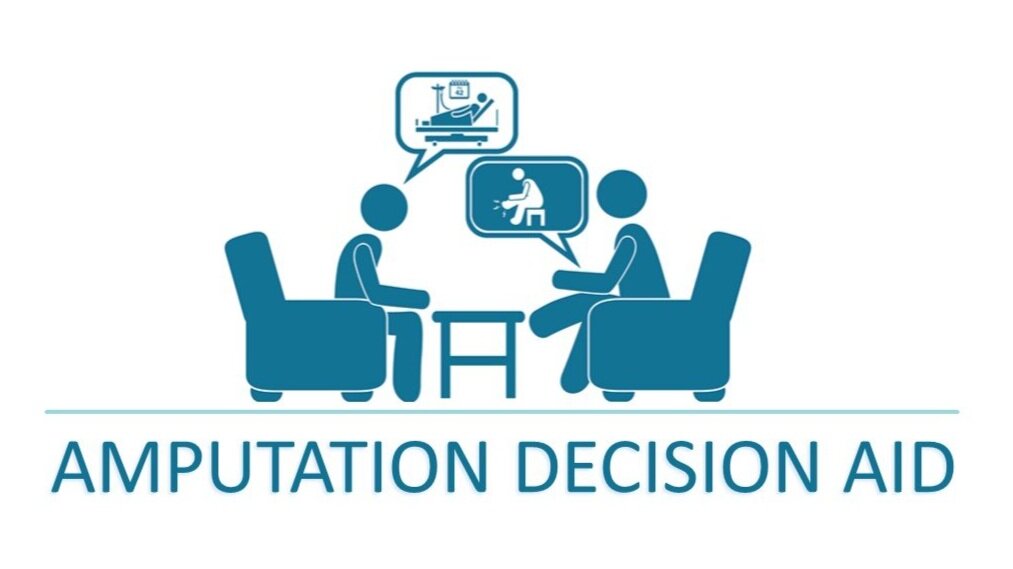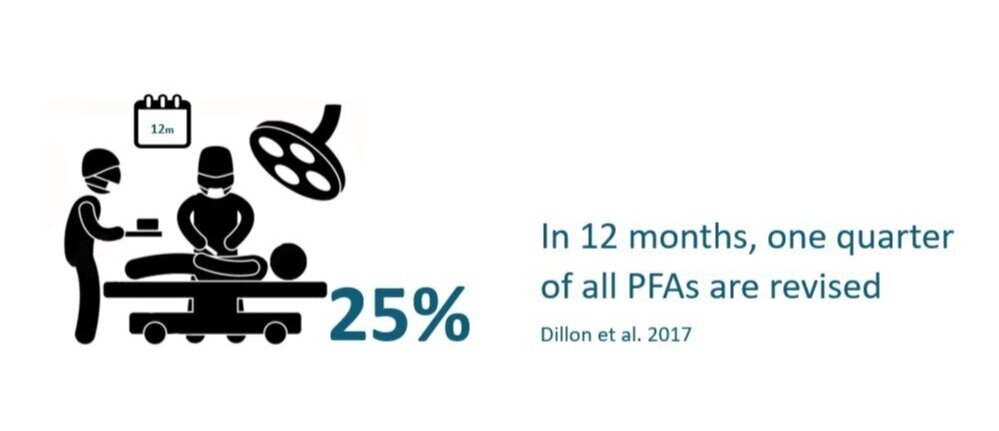Our story
Our story, and our motivation to produce the Amputation Decision Aid, is perhaps best told through the lived experience of those who’ve undergone partial foot amputation.
In our interviews with people about their experience of partial foot amputation due to peripheral arterial disease, most people seemed poorly informed about what the surgery involves, the likely outcomes, and the risks of complications in the months ahead.
“They kept saying cleaning debriding. To me, I thought it was cleaning the wound, but it was actually getting shorter every time.”
— Terry, reflecting on his experience of partial foot amputation
Most people facing the prospect of partial foot amputation due to peripheral arterial disease would be surprised by the high rates of complications and reamputation surgery in the months that follow
“You’re on massive amounts of pain killers… Your decision making isn’t as clear as it would normally be. Your emotions are all over the shop. It’s very foggy you know. You’d take pain killers and two hours later you realise you’re still looking at the fish tank. It made communication so hard.”
- Paul, reflecting on his experience of partial foot amputation
A truly informed choice
If people facing the prospect of partial foot amputation were better informed, and supported as they deliberated on such a difficult decision, we wondered how they would balance the likely outcomes and risks of the different surgical options.
Would they choose a toe amputation? Would they opt for a more invasive amputation, such as mid-foot amputation or even a below-knee amputation, if it reduced the likelihood of complications and further amputation?
The voice of experience
In our interviews with people about their experience of partial foot amputation, many people identified ways that we might help improve the experience.
“ I would ask what the mobility comparisons would be between the two amputations. I probably should have asked more questions about being confined to the house, everything that was involved around the VAC machine… having to be on pain killers. The quality of the time. If there were statistics on success rates, I’d point those out too.”
— Paul, reflecting on his experience of partial foot amputation
“Rather than ask how they would cut the toe off, I’d ask about how it is going to affect me.”
— Mei, reflecting on her experience of partial foot amputation
“Sit down. Have a cup of tea. Get to know them. Get the feeling of them. Just let the conversation flow.”
- Bruce, reflecting on his experience of partial foot amputation
Can shared decision-making help?
Given the advice of people who’ve undergone partial foot amputation, we believe that the best way to help inform difficult decisions about amputation surgery is to use a shared decision-making approach.
Shared decision-making describes a collaborative process whereby clinicians and patients engage in meaningful conversations focused on decision-making.
At first glance, a shared decision-making consult might look like any other, but it is deliberately designed to empower patients by providing accurate and unbiased information about all the treatment options, the pros and cons of each, as well as support as they deliberate on the best path given their unique circumstances, values and preferences.
“You get information from doctors and nurses, but I find it easier to read something off paper… and let it really sink in [brochures] you can take with you and read them in your room, and read them when ever you feel like it in your own time.”
— Mei, reflecting on her experience of partial foot amputation
Shared decision-making resources
To support the process of shared decision-making we’ve developed the Amputation Decision Aid as well as the Amputation Discussion Guide.
The Amputation Decision Aid is a resource written specifically for people facing the prospect of partial foot amputation due to peripheral arterial disease and includes unbiased information about the different options as well as evidence about the likely outcomes and risks.
The Amputation Discussion Guide is written specifically for healthcare professionals and includes example conversation starters to facilitate more meaningful conversations tailored to the needs of each individual patient.
Development process
High-quality decision aids are developed in accord with the International Patient Decision Aid Standards. These standards help developers use well-established methods that ensure the right topics have been included, that information is easily understood by a lay audience, and rigorously tested with the very people who will use the decision aid.
If you’d like to know more about the development of the Amputation Decision Aid and Amputation Discussion Guide, please check out our publications.







